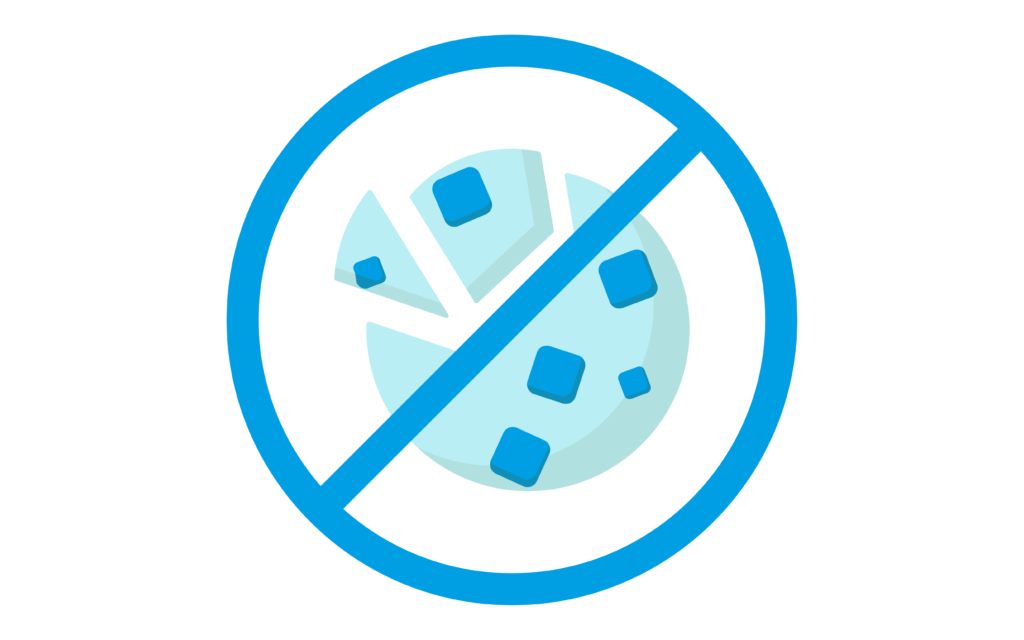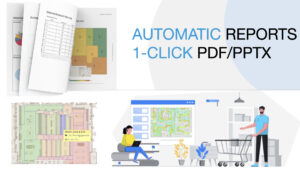In 2020, Google announced the end of third-party cookies over the course of two years. The same year, Apple declared limiting the use of IDFA (Identifier for Advertisers), which enables advertisers to hunt down users across different apps.
Digital marketers and advertisers have long depended on third-party cookies and tags to deliver personalized and targeted ads. Furthermore, this technology also aids them in learning more about their web visitors.

Anyhow, things have changed in the past decade. There’s a growing concern for greater consumer control and consumer privacy online. By the mid of 2023, the three most popular internet browsers will stop backing for third-party cookies. Safari and Firefox were the first to do it, and Google is planning to join them next year.
Their settlement will have a significant crash on the online advertising industry. Preparing to put the brand in a cookie-less world is essential if marketers want to tune into what will soon be the new normal.

Understanding how cookies work
Websites rely on first-party cookies to improve user affairs. First-party cookies recall the action of a website’s visitor. Performing the same task repeatedly is not a requisite. They give users a personalized experience and a perception that their chosen brand knows them.
Third-party cookies are laid down by other websites. For instance, an advertising service (Google Ads) develops and places a third-party cookie on a website to monitor user actions and behavior. The consequences are personalized advertisements that mirror what consumers search for and like. Advertisers and marketers rely on third-party cookies because they collect the following data using them:
- User preferences
- Service and product preferences
- Information showing a user’s previous searches
- Demographic information like gender, age, and location of website visitors
The data is then used and stored to target customers with video ads and online displays tailored to their cookie profile. However, by 2023, the way advertisers and publishers use Google ad-tracking tools and cookies is going to change. The tech giant plans to close out google third-party cookies on Chrome browsers. The whole digital ad industry will need to calibrate and find innovative ways to deliver personalized ads to users.
The phase-out of Third Party Cookies
Google is planning to stop using third-party cookies in their most popular browsers, including Chrome. Simultaneously, many advertisers will learn this has huge consequences, and many are musing about what digital marketing will look like in the future.
The removal of old and now out-of-date technology like third-party cookies will give advertisers a hard time tracking the web activity of potential customers, which will have a huge impact on things such as remarketing.
Third-party cookies have assisted advertisers big time in targeting ads depending on the data they collect, ranging from gender and age to historic behavior on search history and websites.
In principle, Google’s purpose is to satisfy the concerns of their audience, consumers who have learned about the capture and use of their data, and more and more perceive third-party cookies as a pattern of privacy-invading technology.

Moreover, with no more third-party cookies to depend upon, advertisers will drive their interest toward first-party cookies and Retail Media for targeting information. First-party cookies are stored on the territory and can be utilized for things like recommendation systems and on-site search optimization.
What is Google’s plan B?
As an alternative to dependence on third-party cookies, Google has been developing the Privacy Sandbox, which is set to be a less intrusive blend of targeted advertising. The Privacy Sandbox is a cluster of technologies that aim to shield the privacy of users online, while still equipping businesses with tools and technologies to advertise efficiently.
As part of the Sandbox, Google has developed the new Topics API – a new proposal for cookie tracking. The algorithm runs within the browsers of a user and classifies them within a bunch of high-level interest groups like food, travel, or fashion. These broad sets can then be used for targeting the right audience.

When Google announced the decision to end third-party cookies, various advertising agencies criticized the action. The main concern was the impact this decision would have on the ad industry.
Due to their confusion, GetApp surveyed to find the marketing impact of the phase-out of third-party cookies. The survey concluded that:
- 44% of marketers estimate they require to level up their spending by 5%-25% to reach the same goals as 2021
- 41% of marketing experts are of the view that the biggest challenge will be the impotence to track user data in detail
- 23% of marketers predict they will look up to email marketing software because of Google’s new policy.
What advertisers need to know about Google’s Phase-Out
As third-party cookies are so crucial to advertising technology, their elimination will significantly affect Digital Advertising. Again, Marketing experts that rely thoroughly on data from google third-party cookies for ad targeting and different campaigns will need to amend their strategies.
Administering frequency and reach, evaluating and measuring third-party data, advertiser’s business models, DMP, and biddable technologies are affected. This may need an amendment in channel investments, marketing budgets, and advertising campaign strategies.
In a world full of marketing and advertising campaigns, there are two groups that are most affected by the end of third-party cookies:
- Those who sell values and ideas
- Those who sell services and products
The first group, referred to as purpose-driven marketing, will be severely affected by the third-party cookies‘ phase out. It is difficult to intercept how a consumer feels about certain problems. It is harder to determine how to motivate consumers to take a specific action than intercepting consumers who might buy a specific product.
How to replace Third-Party Cookies?
It is a fact, Google Third Party Cookies are vanishing away in 2023. What is going to replace them in digital advertising?
Here are the best alternatives to third-party cookies that can aid in keeping websites running smoothly.
Tracking consumers in alternative ways – Privacy Sandbox
A new technology called the Federated Learning of Cohorts (FLoC) will collect user data and classify it into groups instead of building out individual profiles. Google can share those user profiles with advertising companies.
This will equip Google to allow targeted ad campaigns while maintaining a hold over users’ personal data. As we approach Google’s third-party cookie phase-out, the Ad industry will need to learn more about these technologies.

For now, advertising companies will need to consider where their overall strategy stands, with and without Google’s alternatives.
Contextual advertising
Contextual advertising refers to inserting suitable ads into a piece of content. The campaign allows quarrying websites depending on similar keywords. e.g. To place furniture advertisements in articles about home decor.
Contextual ads aren’t the type of ads that are customized to the personal data action of a user. Instead, they are customized to the content itself. Such ads are far less irritating to users who are more privacy-conscious.
The Rise of Retail Media in a Changing Advertising Landscape
Google has given the Marketing Industry time to prepare its path forward. However, when the Phase Out order comes into effect, marketers won’t be able to implement audience targeting on two-thirds of the world’s internet users. All marketers relying on third-party cookies to plan their online campaigns will need to find innovative ways to achieve the same results as before the phase-out.
Luckily, the death of the cookie will not affect First Party Data. For this reason, Retail Media Networks are becoming more and more relevant in this changing advertising landscape.
What Retail Media Networks offer
Retail media Platforms allow advertisers to collect online users’ shopping behavior, build privacy-by-design audiences, and drive commerce outcomes on inventory. Retail Media Advertising formats are triggered by users’ searches and optimized to drive sales. The wide variety of formats that Retail Media Networks offer, allows marketers to advertise within a retailer’s environment and impact users in the best moment of their shopping journey. Search ads activated by shoppers’ searches, Sponsored Products, Display banners, recommended ads at checkout, etc.
Equally important, Retail Media is moving fast. From only focusing on monetizing onsite, Retail Media is currently growing to include all the Media Assets that a retailer might have available. In-store screens, end-aisle, an email database, a magazine, etc. Putting together all the Retail Media Assets means building a Marketing Program. This is an opportunity that marketers should not miss.

Retail Media as an opportunity in the new advertising landscape
Retail media is a great opportunity for counting beyond the digital ad channel and ultimately, bringing up the offline. To remain at the front line of competition, retail media networks should consider re-electing a portion of their advertisement spending on more considerate channels.
Just as investing in the organic search channel offers a superior ROI and greater compounding help than paid media, by examining search data, marketing experts can understand precisely what consumers are looking for and connect with them early on.
Advertisers and Marketers that diversify their offline campaigns can now begin to observe results far before the competitors do. As the revolution of privacy continues and lawmakers intervene, individuals and brands that stopped depending on invasive ads will gain long-term benefits.

Data is the key to gaining success in offline retail media in these times of change. Marketers can’t rely on assumptions anymore. The landscape of retail media is getting competitive, not relying on retail analytics or hard data will lead to missing out on smart choices that can increase sales and improve the growth trajectory and customer satisfaction of the retail business.
Conclusion
The world of digital advertising may seem daunting without third-party cookies. However, new technologies that help provide consumers with a customized experience will rise while keeping all their privacy rights.
For now, Google’s Privacy Sandbox is a considerate alternative for ad targeting. No need to follow individual users to learn about the kind of ads marketing experts should provide to them. Instead, this technology will group them with people expressing similar interests.
Marketers looking to thrive in the upcoming market landscape must consolidate retail data analytics into all their choice-making processes. Being aware that getting the appropriate systems and mastering to collect data from them can take a while.
All marketers utilizing user data at their full potential will be able to extract meaningful retail media insights.
To learn more about the exciting world of Retail Media, subscribe to our newsletter today. Shoppermotion provides Offline attribution for Retail Media Networks. Measuring shoppers’ behavior passively and anonymously, getting Shopper Insights to ease operational and strategic decisions.






